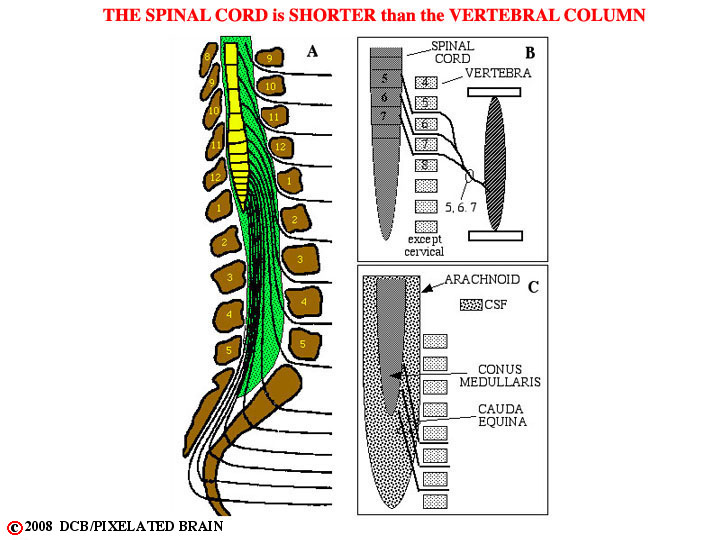
PIXBRAIN HOME _ _ HOME MOD 1 or 2 _ _ previous _ _ Lect-Dev - Fig 7 _ _ next _ _ I WANT TO
- - - - - Early in development, the spinal cord extends through the entire length of the vertebral column, and spinal nerves exit by passing directly laterally from the cord through intervertebral foramina. But, starting at about month 3, the vertebral colmn lengthens more rapidly than the spinal cord, with the result that the lower end of the cord (the conus medullaris) moves upward within the canal, dragging spinal nerve roots as it goes. Figure A shows the final result in the adult, with the spinal cord ending at the lower end of the L1 vertebra.
- - - - - As shown in B, the only way to determine the level of innervation of a peripheral structure is to trace the nerve(s) back to intervertebral foramina.
- - - - - Both A and C illustrate the fact that the subarachnoid space, which contains cerebrospinal fluid, extends well below the conus medullaris. It is in this region that CSF samples may be obtained (see arrow in A) with out the risk of damaging the spinal cord. Usually, but not always, the exiting nerve roots just float away from the needle as it enters this space.arly in development, the spinal cord extends through the entire length of the vertebral column, and spinal nerves exit by passing directly laterally from the cord through intervertebral foramina. But, starting at about month 3, the vertebral colmn lengthens more rapidly than the spinal cord, with the result that the lower end of the cord (the conus medullaris) moves upward within the canal, dragging spinal nerve roots as it goes. Figure A shows the final result in the adult, with the spinal cord ending at the lower end of the L1 vertebra.